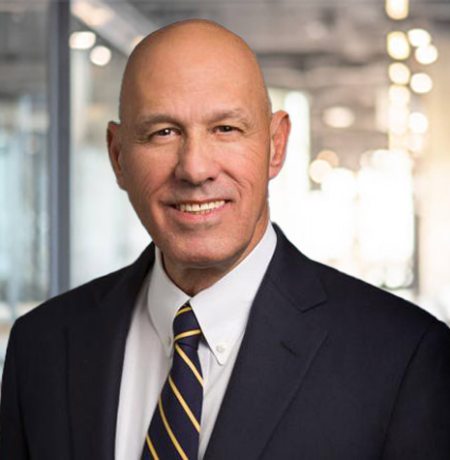For a very long time, hospitals have been organized around three principles that inform the way they run their organizations, and how they conduct themselves in the management suite and the board room.
The first principle is the desire to maintain organizational control.
This principle has come about in large part because the clinical enterprise is inherently risky. Therefore, leaders do not want to be in a position where they don't have control of the clinical enterprise. That principle has extended beyond specifically clinical matters to all aspects of operation. Maintaining organizational control has come to mean minimizing organizational risk.
The second principle, which goes along with the first, is to minimize enterprise risk.
Hospitals have always been very risk-averse organizations. Over time, as different concepts have been introduced, organizations have had to be talked into doing things that allowed more risk, and that could result in better financial results from that risk or better strategic results from that risk.
The third principle is maintaining operational flexibility. Management teams and boards don't want to get caught in a box when difficult or bad things start to happen. This has to do with the public and reputational notion of running a hospital. Management and boards want to have the operational flexibility to take the actions necessary to resolve any situation that could harm the reputation of the organization.
These three principles are all well and good, but they have to be maintained and enforced. And it is expensive to maintain control, minimize risk, and maintain maximum operating flexibility. In general, leaders may believe that these very high levels of healthcare cost come from the way provider organizations are run. But that’s not true. Leaders make decisions every day in which they actually pay to allow those three principles to be in full flight.
Let’s look at a metaphor for this situation. If an organization is focused on maintaining control and eliminating to the greatest extent possible the externalities that limit control and increase risk, then when it comes time to finance, that organization will tend to look toward a 30-year fixed-rate transaction, because that transaction eliminates the risks of externalities.
However, if an organization wants to lower the costs of that transaction, the organization would do a variable-rate transaction or use certain hedging strategies. But getting those lower costs invites in the externalities of the world—the kind of externalities we saw in 2008 and 2009.
So management teams and boards that don’t want to bring in those externalities look toward a 30-year fixed rate transaction at a higher cost.
This is a metaphor for all the other operating decisions that a hospital makes. If an organization’s approach is to eliminate risk to the degree possible, and the leaders apply that approach to all their decisions, then the organization can purchase that increased control and minimized risk. But those decisions will result in higher costs.
We have recognized for many years that not-for-profit healthcare is expensive. There is a fundamental philosophical reason for that situation. Organizations are trying to maximize the principles of maintaining control, minimizing risk, and maximizing flexibility, and they are paying up to do that.
There are hundreds of examples of situations in which organizations have to decide: Do we enforce these three principles? Or do we back off these three principles in order to reduce the overall costs of running the organization?
However, if we continue to proceed on this operating philosophy, we will continue to have the high operating costs that are directly correlated with that operating philosophy. If we want to get to a healthcare system that has a different operating cost point, then we have to rethink these operating principles.
Also, these operating principles create a perspective in which the needs of the organization are given a higher priority than the consumer’s needs. That’s the opposite of what a company like Amazon does. Amazon’s mantra is, first figure out what the consumer needs, and then figure out what Amazon does.
When you insist on organizational control and low enterprise risk, the decisions that are being made in the board room are being made on behalf of the organization, and never really on behalf of the consumer. And that’'s a very unfortunate competitive place to be right now. This is just not the way the American economic model works anymore. The dominant model is the way that Apple, Microsoft, and Amazon behave every day. And in the past year, the dominance of that model has dramatically accelerated.
Now, in order for healthcare organizations to take advantage of certain critical opportunities, they are going to have to accept less control, to take more risk, and to reduce their operating flexibility.
In particular, that will be necessary in order to reduce cost materially. We’ve picked almost all the low-hanging fruit when it comes to costs, but costs are still too high. And that’s because now we have to attack the operating principles in order to reduce costs more.
Next, hospitals will need to take a truly consumer-first attitude. Research shows that what consumers really care about is how they feel as they walk away from the interaction. Not how they felt when they first got there. Not how they felt while the transaction was happening. It's how they feel about the last mile. This has not been an area of focus for healthcare organizations. That last mile may be smooth from the hospital’s perspective, but is the consumer truly happy when the encounter ends? For a company like Amazon, there is an extraordinary focus on making that last mile better and then better still.
The changing American economic model is incredibly fluid right now. It’s highly dependent on technical competency and accumulated intellectual capital. Why has Amazon been so extraordinarily effective during the pandemic? Because they accumulated this extraordinary technical competency and this unbelievable intellectual capital, and then they were able to combine that competency and capital, and roll it out during the pandemic.
And that was what consumers wanted. Which is why Amazon’s revenue was up 40% in the first quarter of the pandemic and while performance metrics fell through the floor for businesses using traditional business models, or businesses without the necessary technical competency and intellectual capital.
Hospitals don't have the technical competency and accumulated intellectual capital to be truly competitive in the dominant economic model. So hospitals will need to be open and experimental about possible partnerships and joint ventures to get that technical competency and intellectual capital.
There are so many strategic needs and opportunities in healthcare now. The need to deliver a better experience to consumers. The need to reduce operating costs. The need to integrate digital health into the care process. It's naive to expect that the average American hospital could do all these things themselves, which means that there are going to be many kinds of joint ventures and partnerships to accomplish these things. But in order to do those partnerships and joint ventures, it’s inevitable that hospitals will have to accept less control and take much more risk, and accept reduced flexibility.










